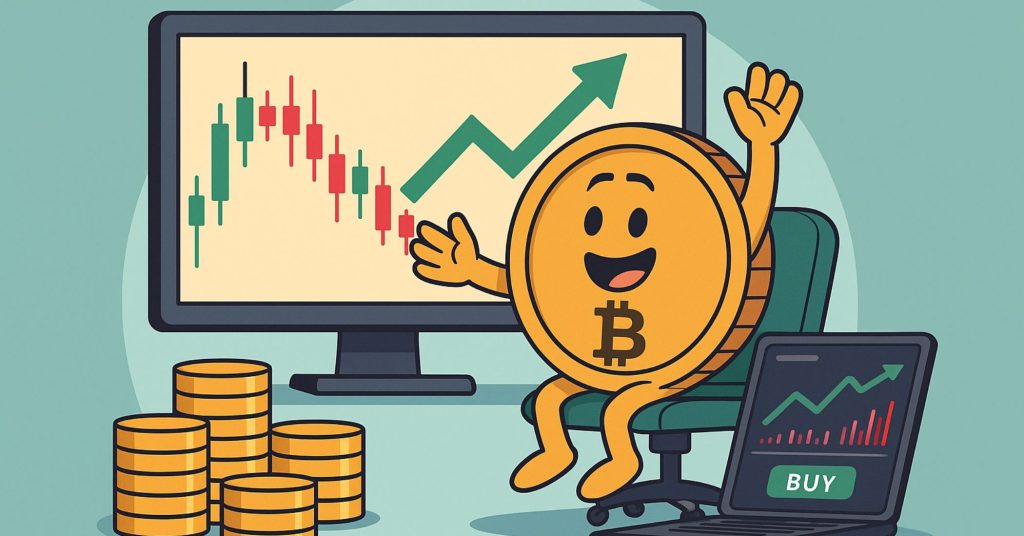But even though the market is open all the time, that doesn’t mean every hour is the best time to trade.
Some parts of the day see more action, bigger price moves, and better trading opportunities. Other times, the market slows down and prices can stay flat or act unpredictably.
In this guide, we’ll break down when crypto is most active, which hours are best for different types of traders, and how timing can help you trade smarter.
Does Crypto Trade 24/7?
Yes, crypto trades 24 hours a day, 7 days a week. There are no breaks, holidays, or closing bells.
This is one of the things that makes crypto different from traditional markets like stocks or forex. You can buy or sell Bitcoin, Ethereum, or any other coin at any time of day, no matter where you are.
But even though the market is always open, trading activity isn’t the same all day. Some hours are busier, with more buyers and sellers, while others are much quieter. That’s why timing still matters.
Why Timing Still Matters in Crypto
Even though you can trade crypto any time, not every hour is a good time to do it.
During busy hours, there are more people trading. This means prices move more, and it’s easier to buy or sell quickly. You also get better prices because there’s more competition between buyers and sellers.
During slow hours, the market can feel quiet. Prices might stay flat or swing in strange ways because fewer people are around. It’s also harder to make fast trades without big price changes.
So even in a 24/7 market, choosing the right time to trade can make a big difference.
Key Time Zones to Know (UTC, EST, etc.)
Since crypto is global, traders use different time zones. The most common one in crypto is UTC (Coordinated Universal Time). Many charts and news updates use UTC as a standard.
If you’re in the US, you’ll probably see times listed in EST (Eastern Standard Time). That’s New York time. If you’re in the UK, it’s usually GMT or BST depending on the season.
It helps to know how these time zones line up, especially when tracking price moves or following news. A price spike at 2 PM UTC might be morning for one trader and late night for another.
Knowing when different parts of the world are awake helps you trade with the flow, not against it.
When Is Crypto Most Active?
Crypto may run all day, but some hours are busier than others. The most active time is usually when the US and European markets are both awake. This overlap brings in the most traders, which means more volume and bigger price moves.
This usually happens between 8 AM and 11 AM EST (1 PM to 4 PM UTC). During this time, you’ll often see more action on charts, especially with major coins like Bitcoin and Ethereum.
Higher activity means better chances to enter or exit trades quickly, which is helpful for both short-term and long-term traders.
What About Late Night and Weekend Trading?
Late night and weekends are usually slower. Fewer people are trading, which means lower volume. This can make prices jump around more because there isn’t as much buying and selling to balance things out.
That doesn’t mean you can’t trade. Some people actually like trading during quiet hours because there’s less noise. It can also be a good time to test strategies or place small trades without feeling rushed.
Just keep in mind that price swings can be more random when the market is quiet. Always check the volume and make sure there’s enough activity before making big moves.
Best Hours for Day Traders
If you’re day trading, timing is everything. You want to be in the market when there’s lots of movement and plenty of people trading.
The best hours are usually when the US and Europe overlap, which is around 8 AM to 11 AM EST. This is when you’ll see the most volume, tighter spreads, and more chances to catch quick price moves.
Some traders also avoid very early Mondays and late Sundays. These times can be unpredictable as the market is waking up or winding down. Sticking to high-volume windows helps reduce risk and gives you more control over your trades.
Best Hours for Long-Term Investors
If you’re holding for the long term, you don’t need to worry about every little price move. But timing can still help.
Many long-term investors watch for news events, project updates, or market trends before making a big move. It’s less about the exact hour and more about what’s happening in the market overall.
Still, buying during low activity times (like weekends or off-hours) might lead to worse prices because of lower liquidity. To keep things simple, some investors just wait for regular high-volume times to make trades, so they avoid big slippage or surprises.
Mistakes to Avoid With Timing
Even in a market that never closes, timing your trades the wrong way can lead to missed chances or unexpected losses. Here are a few common mistakes to watch out for:
- Trading during very low-volume hours
- Chasing sudden price spikes
- Ignoring time zones
- Forgetting to check volume
- Overtrading during quiet weekends
Being aware of these helps you stay in control and avoid trades that feel rushed or forced.
Final Thoughts
Crypto might be a 24/7 market, but smart traders know that timing still matters.
By trading during busy hours, you get better prices, faster execution, and more chances to catch strong moves. Whether you’re day trading or investing long term, knowing when the market is most active can give you an edge.
Take your time, watch the patterns, and find a schedule that fits your lifestyle. The market isn’t going anywhere, so there’s no rush.









